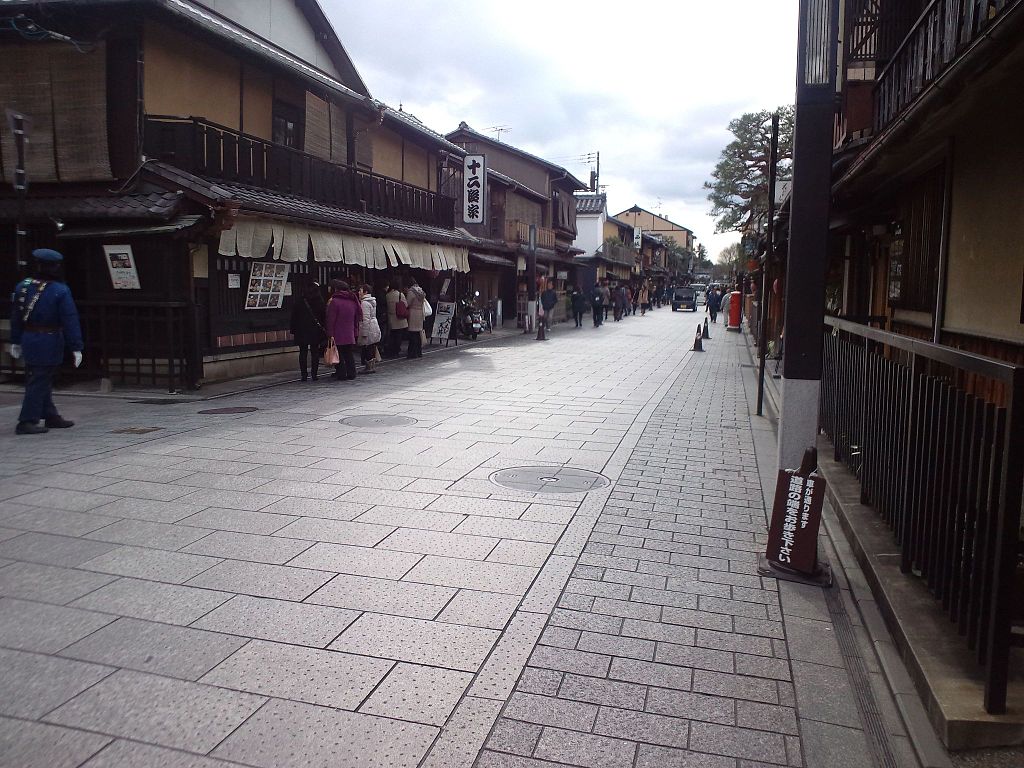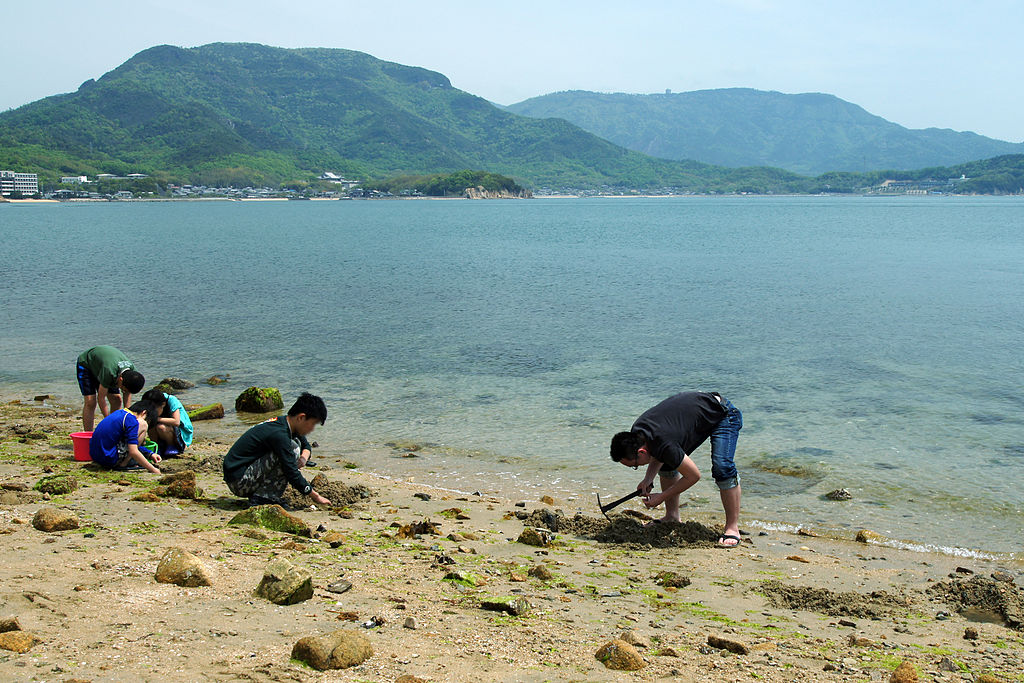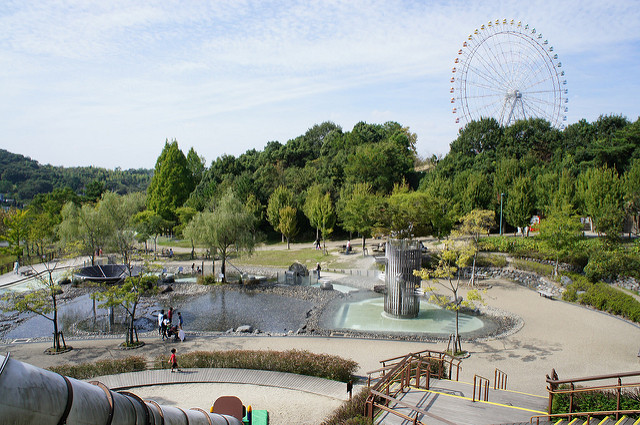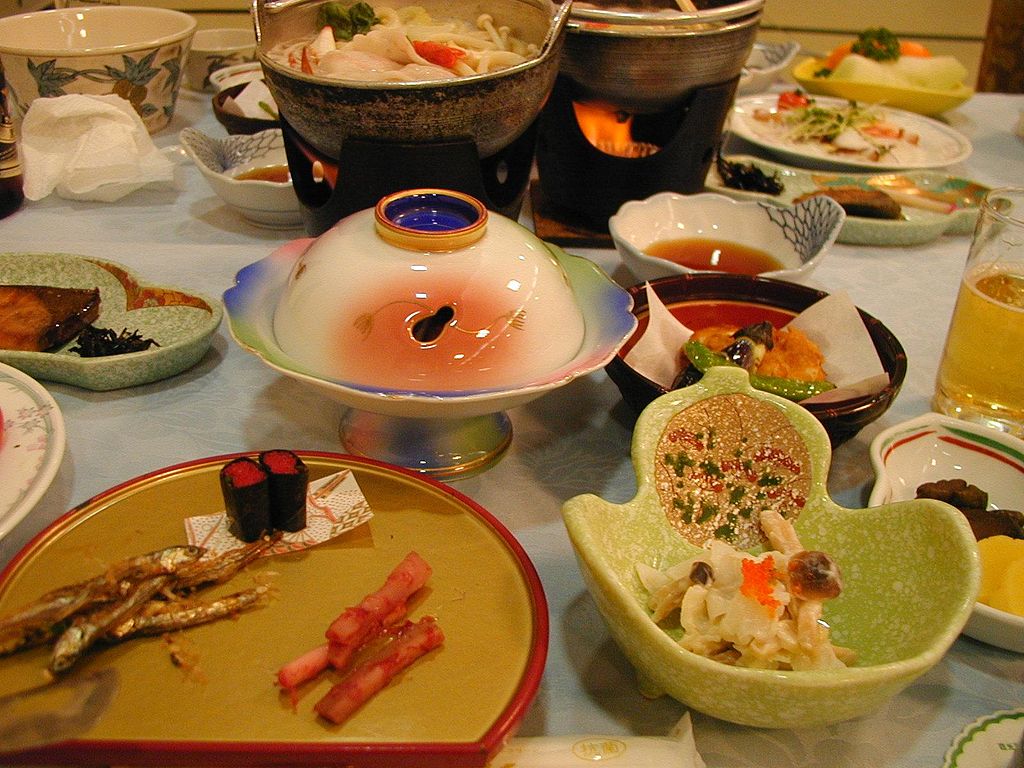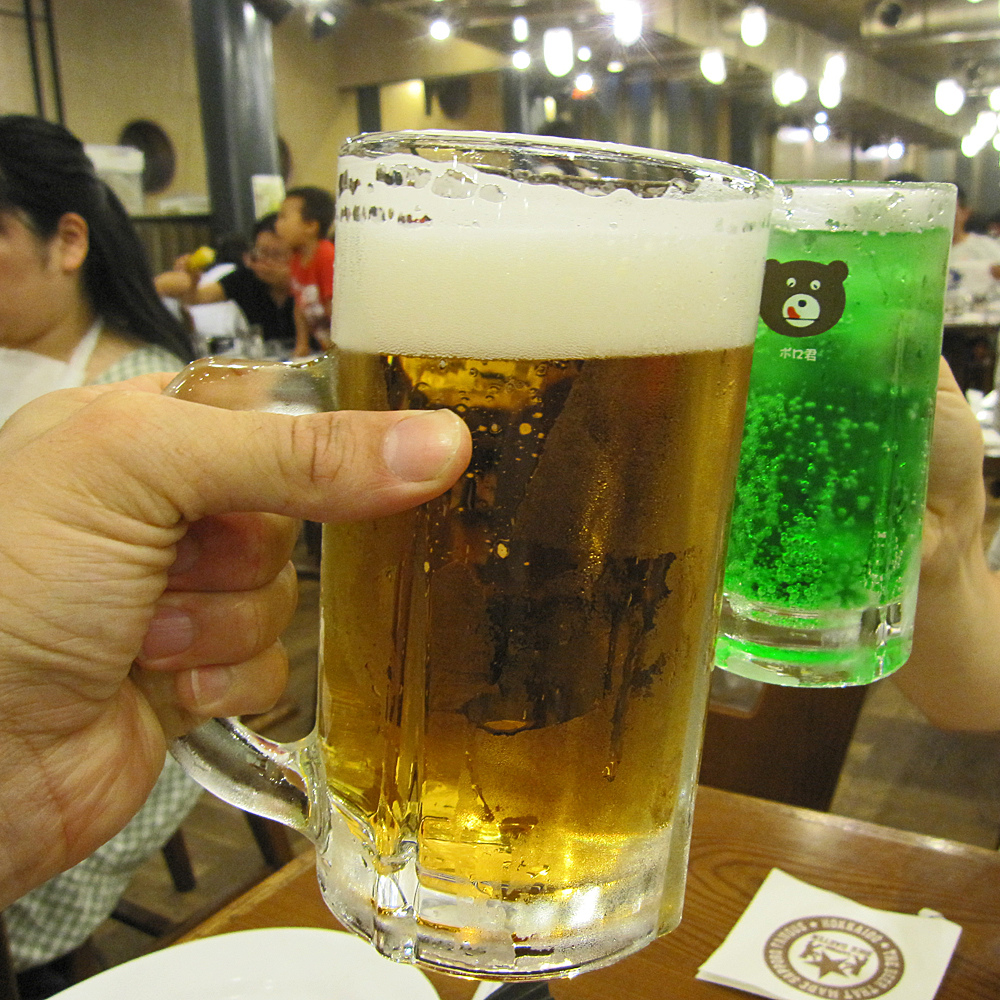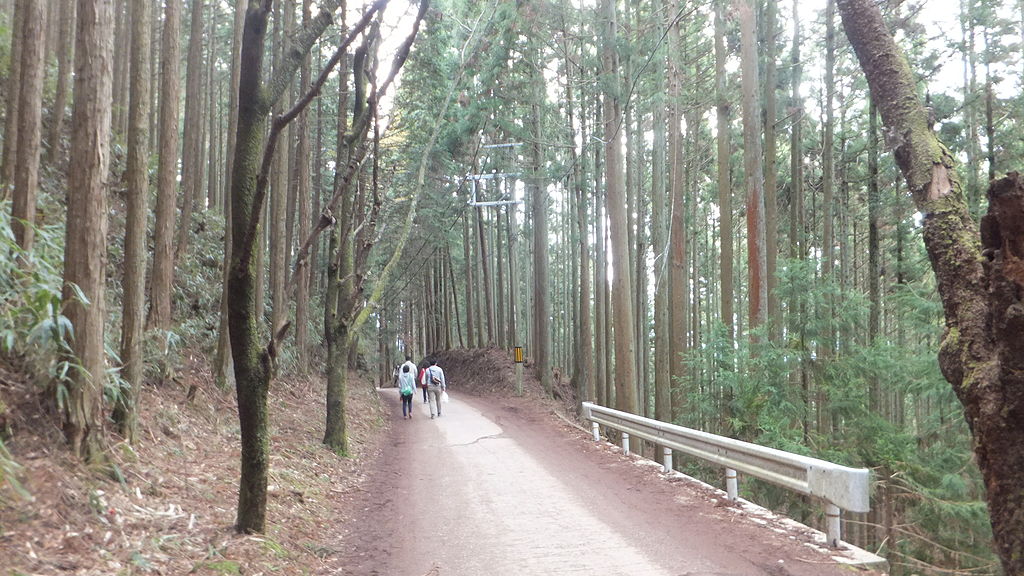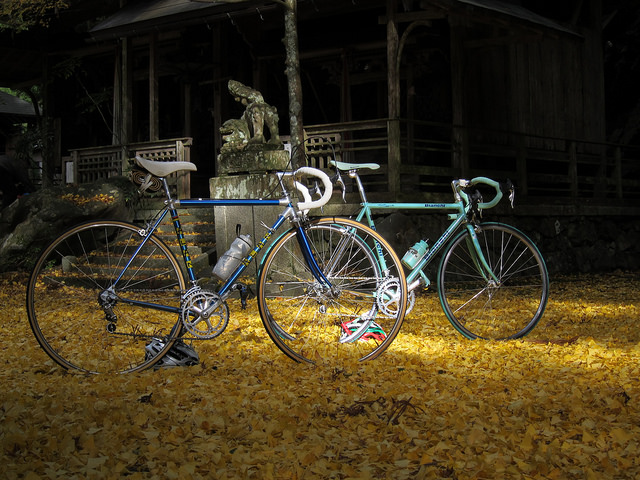Mar 27, 2017

Situated between the sea and an impressive mountain range, Kobe boasts an array of stunning outdoor escapes located within and just beyond the bustling port city. Kobe might not be as massive an industrial and commercial center as some of its neighboring cities, but that doesn’t stop tourists and locals from flocking to its many natural reserves for some quiet respite in nature.
The parks and gardens in Kobe can be enjoyed year around, and with the weather warming into the spring, it’s a perfect time to get out of the house and enjoy all that this natural wonderland of a city has to offer. Whether you’re an avid hiker, professional picnic-er, or just happen to love the view, these natural treasures of Kobe should be on your radar this season.
Futatabi Park
 The mountains behind the city of Kobe, known for their assortment of hiking trails with incredible views of the city, have long been places of natural refuge. Situated at the top of Mt. Futatabi, Futatabi park holds prime green real estate that’s free for you to enjoy.
The mountains behind the city of Kobe, known for their assortment of hiking trails with incredible views of the city, have long been places of natural refuge. Situated at the top of Mt. Futatabi, Futatabi park holds prime green real estate that’s free for you to enjoy.
For a quick, 30-minute hike or 20-minute drive from Shin-Kobe Station, you could be relaxing on the top of this iconic mountain in a space complete with a small pond, playground equipment, and a plethora of picnic tables.
Where: Atop Mt. Futabi, Kobe 650-0007, Hyogo Prefecture
Admission: Free
Reference Website (English): www.city.kobe.lg.jp
Nunobiki Herb Park
 Just north of the Kitano district, you will find yourself in the shadow of Mt. Rokko, and the expansive herb garden along its side. The Nunobiki Herb Park is home to over 200 species of plants and herbs, and beyond the fragrant flowers and delicious teas, you can appreciate an impressive panorama of Kobe. A hike from the mountain’s base will take you up a scenic path that crosses Nunobiki Falls and will last about 40 minutes, depending on how often you need to stop and take in the setting.
Just north of the Kitano district, you will find yourself in the shadow of Mt. Rokko, and the expansive herb garden along its side. The Nunobiki Herb Park is home to over 200 species of plants and herbs, and beyond the fragrant flowers and delicious teas, you can appreciate an impressive panorama of Kobe. A hike from the mountain’s base will take you up a scenic path that crosses Nunobiki Falls and will last about 40 minutes, depending on how often you need to stop and take in the setting.
There is also the option to take a relaxing ride to the top in a gondola, which offers a breathtaking aerial view of the waterfall and the city below. Regardless of ascension method, a trip to the herb park wouldn’t be complete without a stroll down the rows of plants and herbs that line the walking path on the hillside.
Where: 5 minute walk from Shin-Kobe Station, 1-4-3 Kitano-cho, Chuo Ward, Kobe, Hyogo Prefecture
Ropeway Fee: Round trip and admission to herb garden – ¥1,400, one-way and admission to herb garden – ¥900, round trip after 5:00 p.m. – ¥800
Herb Garden Admission: ¥200
Hours: Weekdays – 10:00 a.m. – 5:00 p.m. Weekends and Holidays – 10:00 a.m. – 8:30 p.m. *Admission ends 15 minutes before closing time*
Tel: 078-271-1160
Reference Website (English): www.feel-kobe.jp/...
Official Website (Japanese): www.kobeherb.com
Sorakuen
 Tucked away just west of Sannomiya Station, Sorakuen offers a complete Japanese garden oasis set against the pristine Kobe skyline. Walking through this peaceful space, visitors can enjoy traditional features such as a lake, a charming houseboat, and a tea house, as well as the soothing sounds of waterfalls drowning out the sounds of downtown just outside.
Tucked away just west of Sannomiya Station, Sorakuen offers a complete Japanese garden oasis set against the pristine Kobe skyline. Walking through this peaceful space, visitors can enjoy traditional features such as a lake, a charming houseboat, and a tea house, as well as the soothing sounds of waterfalls drowning out the sounds of downtown just outside.
Where: 5 minute walk north from Kobe Municipal Subway Kencho-Mae Station, Sannomiya Motomachi Area, Kobe, Hyogo Prefecture
Admission: ¥300
Hours: 9:00 a.m. – 5:00 p.m. (closed on Thursdays)
Tel: 078-351-5155
Reference Website (English): www.feel-kobe.jp/...
Official Website (Japanese): www.sorakuen.com
Suma Rikyu
 As a city with much Western influence, Kobe is full of diverse architecture and heritage, and Suma Rikyu park is one such inter-cultural marvel. Suma Rikyu park is a French-style botanical garden located 20-minutes by train and 10-minutes walking from Sannomiya Station. With rows of rosebushes and irises, elaborate water fountains, and a playground for the kids, Suma Rikyu is a pleasant place to spend an afternoon.
As a city with much Western influence, Kobe is full of diverse architecture and heritage, and Suma Rikyu park is one such inter-cultural marvel. Suma Rikyu park is a French-style botanical garden located 20-minutes by train and 10-minutes walking from Sannomiya Station. With rows of rosebushes and irises, elaborate water fountains, and a playground for the kids, Suma Rikyu is a pleasant place to spend an afternoon.
Where: 1-1 Higashi Suma, Suma Ward, Kobe, Hyogo Prefecture 654-0018
Admission: Adults – ¥400, children ¥200
Hours: 9:00 a.m. – 5:00 p.m. (closed Thursdays)
Tel: 078-732-6688
Reference Website (English): www.feel-kobe.jp/…
Official Website (Japanese): www.kobe-park.or.jp/rikyu
Kachoen
 For anyone itching to see some nature, but not quite ready to commit to the full outdoors, there’s always an indoor option that can be just as fulfilling. If you’re willing to put up with a few more people and a slightly higher price of admission, Kacho-en within Port Island’s Animal Kingdom is a real treat.
For anyone itching to see some nature, but not quite ready to commit to the full outdoors, there’s always an indoor option that can be just as fulfilling. If you’re willing to put up with a few more people and a slightly higher price of admission, Kacho-en within Port Island’s Animal Kingdom is a real treat.
Within a 16,000 square meter greenhouse, this park packs in an impressive assortment of exotic birds, flowers, and plants. Animal lovers can indulge in up close encounters with surprising animals, and enjoy various shows throughout the day.
Where: 7-1-9 Minatojima Minami Machi, Chuo Ward, Kobe, Hyogo Prefecture 650-0047, Japan
Admission: Adults – ¥1,500, 65 years old or older – ¥1,100, elementary school students – ¥800
Hours: Weekdays- 10:00 a.m. – 5:00 p.m. Weekends & holidays – 9:30 a.m. – 5:30 p.m. (closed on Thursdays)
Tel: 078-302-8899
Reference Website (English): traverseworld.com/...
Official Website (Japanese): www.kobe-oukoku.com
Image by: 663highland (663highland) [GFDL, CC-BY-SA-3.0 or CC BY 2.5], via Wikimedia Commons
Image by: 663highland (Own work) [GFDL, CC-BY-SA-3.0 or CC BY 2.5], via Wikimedia Commons
Image by: 663highland (Own work) [GFDL, CC-BY-SA-3.0 or CC BY 2.5], via Wikimedia Commons
Image by: 663highland (Own work) [GFDL, CC-BY-SA-3.0 or CC BY 2.5], via Wikimedia Commons
Image by: 663highland (Own work) [GFDL, CC-BY-SA-3.0 or CC BY 2.5], via Wikimedia Commons
Image by: Laitr Keiows (Own work) [CC BY-SA 3.0 or GFDL], via Wikimedia Commons


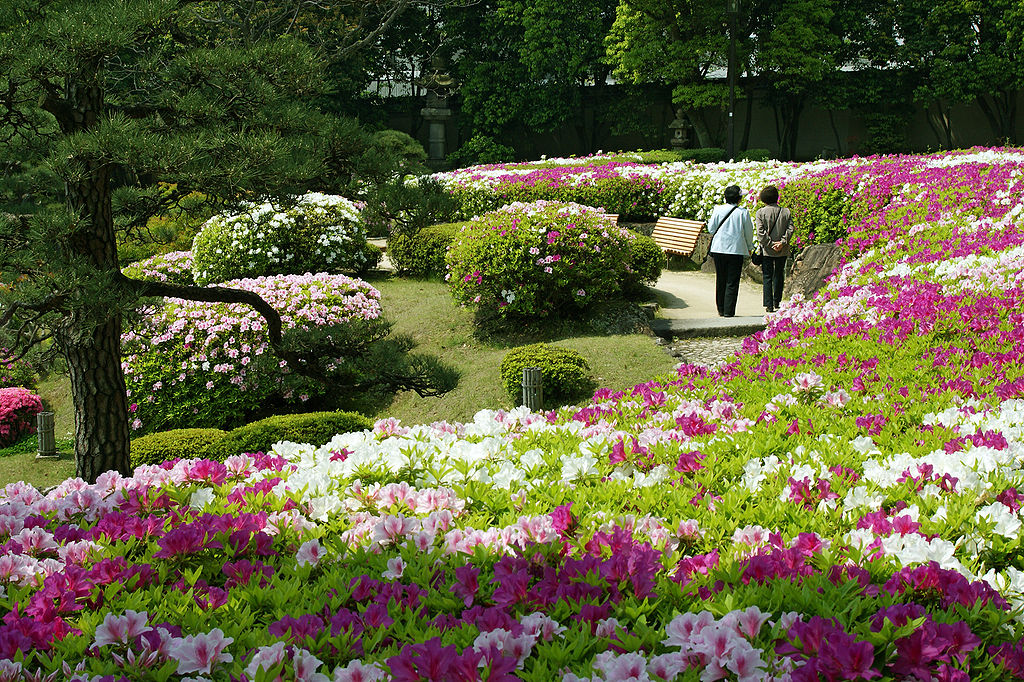

 The mountains behind the city of Kobe, known for their assortment of hiking trails with incredible views of the city, have long been places of natural refuge. Situated at the top of Mt. Futatabi, Futatabi park holds prime green real estate that’s free for you to enjoy.
The mountains behind the city of Kobe, known for their assortment of hiking trails with incredible views of the city, have long been places of natural refuge. Situated at the top of Mt. Futatabi, Futatabi park holds prime green real estate that’s free for you to enjoy. Just north of the Kitano district, you will find yourself in the shadow of Mt. Rokko, and the expansive herb garden along its side. The Nunobiki Herb Park is home to over 200 species of plants and herbs, and beyond the fragrant flowers and delicious teas, you can appreciate an impressive panorama of Kobe. A hike from the mountain’s base will take you up a scenic path that crosses
Just north of the Kitano district, you will find yourself in the shadow of Mt. Rokko, and the expansive herb garden along its side. The Nunobiki Herb Park is home to over 200 species of plants and herbs, and beyond the fragrant flowers and delicious teas, you can appreciate an impressive panorama of Kobe. A hike from the mountain’s base will take you up a scenic path that crosses  Tucked away just west of Sannomiya Station, Sorakuen offers a complete Japanese garden oasis set against the pristine Kobe skyline. Walking through this peaceful space, visitors can enjoy traditional features such as a lake, a charming houseboat, and a tea house, as well as the soothing sounds of waterfalls drowning out the sounds of downtown just outside.
Tucked away just west of Sannomiya Station, Sorakuen offers a complete Japanese garden oasis set against the pristine Kobe skyline. Walking through this peaceful space, visitors can enjoy traditional features such as a lake, a charming houseboat, and a tea house, as well as the soothing sounds of waterfalls drowning out the sounds of downtown just outside. As a city with much Western influence, Kobe is full of diverse architecture and heritage, and Suma Rikyu park is one such inter-cultural marvel. Suma Rikyu park is a French-style botanical garden located 20-minutes by train and 10-minutes walking from Sannomiya Station. With rows of rosebushes and irises, elaborate water fountains, and a playground for the kids, Suma Rikyu is a pleasant place to spend an afternoon.
As a city with much Western influence, Kobe is full of diverse architecture and heritage, and Suma Rikyu park is one such inter-cultural marvel. Suma Rikyu park is a French-style botanical garden located 20-minutes by train and 10-minutes walking from Sannomiya Station. With rows of rosebushes and irises, elaborate water fountains, and a playground for the kids, Suma Rikyu is a pleasant place to spend an afternoon. For anyone itching to see some nature, but not quite ready to commit to the full outdoors, there’s always an indoor option that can be just as fulfilling. If you’re willing to put up with a few more people and a slightly higher price of admission, Kacho-en within Port Island’s Animal Kingdom is a real treat.
For anyone itching to see some nature, but not quite ready to commit to the full outdoors, there’s always an indoor option that can be just as fulfilling. If you’re willing to put up with a few more people and a slightly higher price of admission, Kacho-en within Port Island’s Animal Kingdom is a real treat.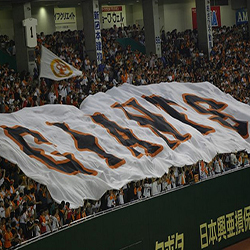

 The first professional baseball team in Japan, The Great Japan Tokyo Baseball Club (as they were then called) were formed in 1934 to compete against an American All-Star team featuring such luminaries of the game as Babe Ruth and Lou Gehrig. When the Japanese Baseball League formed in 1936 they took the name Tokyo Kyojin (Japanese for ‘giants’) before adopting the name Yomiuri Giants after their corporate sponsor in 1947.
The first professional baseball team in Japan, The Great Japan Tokyo Baseball Club (as they were then called) were formed in 1934 to compete against an American All-Star team featuring such luminaries of the game as Babe Ruth and Lou Gehrig. When the Japanese Baseball League formed in 1936 they took the name Tokyo Kyojin (Japanese for ‘giants’) before adopting the name Yomiuri Giants after their corporate sponsor in 1947. The Hanshin Tigers are the second oldest professional team in Japan, and are named after the Hanshin Electric Railway company that owns them. Originally called Osaka Tigers, they play at Koshien Stadium, the oldest ballpark in Japan, revered as sacred, where players traditionally bow before entering and leaving the field.
The Hanshin Tigers are the second oldest professional team in Japan, and are named after the Hanshin Electric Railway company that owns them. Originally called Osaka Tigers, they play at Koshien Stadium, the oldest ballpark in Japan, revered as sacred, where players traditionally bow before entering and leaving the field.